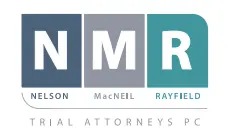We don’t use the word “causation” every day in our normal speech, but the concept of cause and effect routinely touches our lives. Doctors examine patients, take histories, and perform all kinds of tests in an effort to determine what is causing a certain result in a patient. Researchers test theories on causation, such as whether smoking causes cancer. And the law also relies upon the concept of causation.
In fact, causation is an element that a plaintiff must prove in order to recover in a negligence case. In this article, we will discuss two important forms of legal causation, “cause in fact” and “proximate cause,” and how they can affect a personal injury case.
Elements of a Negligence Case
Negligence tort law applies in a number of different types of personal injury cases, including those arising from medical malpractice, semi-truck crashes, automobile accidents, and nursing home accidents. To recover in a negligence action, a plaintiff must prove the following elements of the tort:
- Duty – To recover, a plaintiff must prove that the defendant owed a duty of reasonable care to the plaintiff.
- Breach of Duty – A defendant breaches his or her duty to a plaintiff by failing to exercise reasonable care under the circumstances of the case.
- Cause in Fact – The defendant’s actions must be the cause in fact of the plaintiff’s injuries. This element will be discussed in greater detail below.
- Proximate Cause – The defendant’s actions must be the proximate cause of the plaintiff’s injuries. This element will also be discussed in greater detail below.
- Damages – The plaintiff must suffer damages as a result of the defendant’s negligence.
Understanding Cause in Fact
“Cause in fact” sometimes referred to as “but-for” causation, is a form of logic or analysis used to ensure that a defendant’s actions caused the plaintiff’s injury. The analysis provides that causation exists when it can be said that the result would not have occurred “but for” the defendant’s action that is under investigation. Let’s look at a couple of examples.
First, consider Kellie, who drives her car through an intersection. The light is green, and she sees no danger when she enters the intersection. She is suddenly t-boned by Michael, who runs a red light at a high rate of speed. Kellie suffers severe personal injuries as a result of the crash. Clearly, we can say that Kellie’s injuries would not have occurred “but for” Michael’s negligence in running the red light. Therefore, this element of causation is met.
Now consider a pharmacist, Katrina, who is filling a prescription for Jimmy. Katrina makes a mistake and puts the wrong pills in the container. Jimmy takes the medicine as prescribed and goes to bed. During the night, he has a heart attack for which he must receive emergency treatment. Jimmy learns that he took the wrong pills and blames Katrina for his issues. However, multiple doctors examine the circumstances and determine that although Katrina gave Jimmy the wrong pills, they were vitamins that could not have caused a heart attack. Thus, while Katrina was negligent, her actions were not the cause of Jimmy’s damages. Cause in fact does not exist.
Proximate Cause
One weakness with the concept of cause in fact is that but-for causation sometimes exists even when the relationship between the action and the injury is very attenuated.
For example, what if Lucy misses an hour of pay because she had to sit in traffic and was late for work? She finds out that a car stalled and caused the traffic because Arthur, the driver, negligently ran out of gas. Can Lucy sue Arthur for her lost wages? After all, it’s true that in terms of pure logic, Arthur is the but-for cause of her tardiness. Nevertheless, under such circumstances, the law finds the relationship too unrelated for legal liability and holds that proximate cause does not exist.
A common way that courts analyze proximate cause is to determine if a plaintiff’s injuries are foreseeable to the defendant. In other words, under some circumstances, even when cause in fact exists, the law will hold that proximate cause does not exist because the plaintiff’s harm was not foreseeable to the defendant.
A famous case discussing this issue is Palsgraf v. Long Island Railroad Co., which was litigated in New York. There, a man dropped a package which exploded and caused scales at the other end of a railroad platform to injure a woman standing nearby. The court held that proximate cause did not exist, essentially finding that the woman was too far away, and the injuries were not foreseeable.
It’s important to keep in mind that courts vary on their interpretations of proximate cause and that a different court may resolve similar facts differently.
Call a Lawyer
At Nelson MacNeil Rayfield, our personal injury lawyers are well-trained in negligence law. We also believe that it is imperative to hold wrongdoers responsible for their actions so that all of society can be made safer. If you have been injured and have questions about your rights, please call, and we will be happy to answer them.
